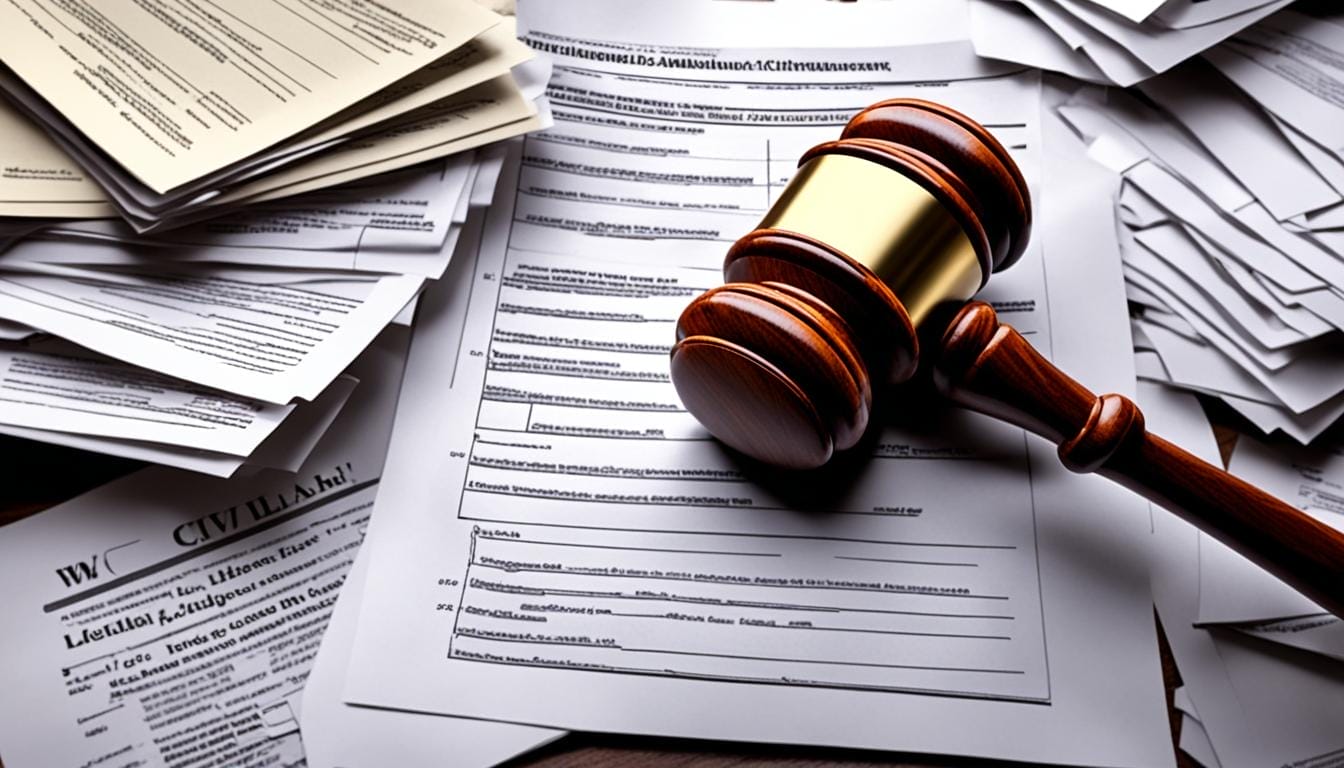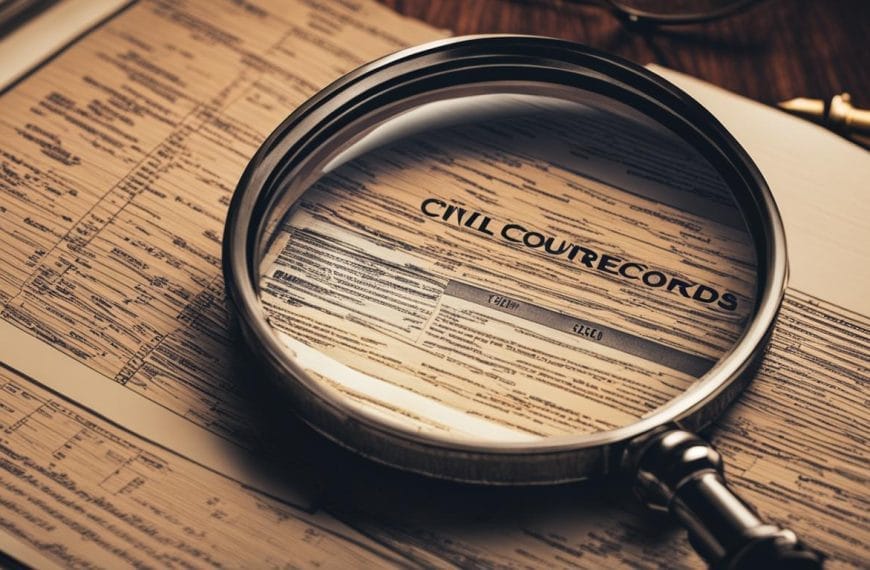Welcome to our article on civil miscellaneous cases! Here, we will provide a comprehensive definition and meaning of civil miscellaneous cases. So, let’s dive in!
A civil miscellaneous case is a unique type of legal proceeding that falls outside the realm of traditional civil actions. Unlike typical civil actions that involve resolving disputes between two parties, a miscellaneous case serves a specific objective set by the filing party. One common objective is to perpetuate testimony or obtain crucial documents for use in a foreign proceeding.
These cases can be initiated in any of the 94 Federal District Courts in the United States under the statute 28 U.S.C. §1782. The laws governing civil miscellaneous cases are outlined in 28 U.S. Code §1782, with further guidance provided by the United States Supreme Court in the ruling of Intel Corp. v. Advanced Micro Devices, Inc. (542 U.S. 241, 2004).
In the next sections, we will explore the purpose, process, timing, and steps involved in obtaining testimony and documents in civil miscellaneous cases. Stay tuned!
Purpose and Process of Miscellaneous Actions
The primary purpose of a civil miscellaneous case is to obtain documents or testimony that will be used in a foreign proceeding. For example, if a lawsuit is filed outside of the United States and an important witness or critical documents are located within the United States, a miscellaneous action can be initiated to perpetuate the testimony and obtain the necessary documents.
The process for initiating a miscellaneous action involves:
- Filing a motion or application with the appropriate court
- Serving the motion or application on the party from whom the documents or testimony are requested
- Following the discretionary factors established in the Intel Corp. v. Advanced Micro Devices, Inc. case
The district court has the authority to determine the scope of the testimony and documentation disclosed in the miscellaneous action.
Obtaining Testimony and Documents
Once a miscellaneous action is initiated, the first step is to file an initiating document, which is similar to a motion to compel. This document requests the court to enforce the request for the perpetuation of testimony and production of documents through a subpoena. The filing party is then responsible for serving the motion or application on the party from whom the documents or testimony are requested.
The district court has the authority to determine the scope of the testimony and documentation disclosed in the miscellaneous action, and if the court does not provide specific guidelines, the Federal Rules of Civil Procedure will govern the process. It is important to note that a responding party is not compelled to provide testimony or documentation that would violate any legally applicable privilege.
Timing of Miscellaneous Actions
When it comes to initiating a miscellaneous action, timing is crucial. A miscellaneous action should be initiated when there is a need to obtain testimony or documents within the United States for use in a foreign proceeding.
This need arises in situations where the foreign court lacks the power to compel the potential witness or holder of the documents to cooperate. For example, let’s say you are involved in a legal dispute in a foreign country, and a key witness with personal knowledge of a contractual negotiation and possession of critical documents is located in Texas. However, the foreign court does not have jurisdiction over that individual.
In such cases, initiating a miscellaneous action in a federal court in Texas becomes necessary to obtain the required testimony and documents.
By initiating the action at the right time, you ensure that you have the necessary evidence and support for your case before it proceeds in the foreign court. This strategic move can significantly strengthen your position and improve your chances of a favorable outcome.
It is important to keep in mind that the timing of a miscellaneous action will vary depending on the specific circumstances of the case. The decision to initiate the action should be based on an assessment of the availability and importance of the testimony or documents, as well as the procedural requirements of both the foreign court and the relevant federal court in the United States.
In summary, the timing of a miscellaneous action is crucial. It should be initiated when it becomes necessary to obtain testimony or documents within the United States for use in a foreign proceeding. By acting at the right time, you can ensure that you have the evidence needed to support your case and improve your chances of success.
Obtaining Testimony and Documents
Once a miscellaneous action is initiated, there are several steps involved in obtaining the necessary testimony and documents. These steps are crucial to ensure a smooth and efficient process:
- File the initiating document: Start by filing an initiating document, which is similar to a motion to compel. This document requests the court to enforce the request for the perpetuation of testimony and production of documents through a subpoena.
- Serve the motion or application: After filing the initiating document, it is essential to serve the motion or application on the party from whom the documents or testimony are requested. This ensures that the responding party is made aware of the request and can prepare their response accordingly.
- Court’s determination: The district court has the authority to determine the scope of the testimony and documentation disclosed in the miscellaneous action. If the court does not provide specific guidelines, the Federal Rules of Civil Procedure will govern the process, ensuring a fair and consistent approach.
- Adhere to legal privileges: It is important to note that a responding party is not compelled to provide testimony or documentation that would violate any legally applicable privilege. These privileges protect sensitive information and ensure fairness in the legal process.
By following these steps, individuals can effectively obtain the necessary testimony and documents needed for their civil miscellaneous case.
Categorization and Disposition of Civil Cases
In the legal system, civil cases are categorized based on their specific case types. The Court Performance Management System (CPMS) provides various categories for civil cases, including:
- Superior Court Civil Cases
- Estate Cases
- Special Proceedings
- Civil Magistrate Cases
- Domestic Relations Cases
- General Civil Cases
These categories help organize and manage the different types of civil cases that enter the court system. By categorizing cases, it becomes easier to track and handle them effectively.
When it comes to the life cycle of a civil case, there are two key milestones: the date a case is considered “filed” and the date a case is considered “disposed.”
The date a civil case is considered “filed” is determined by the “file-stamped date.” This is the date when the clerk stamps the initiating document upon receiving it with the court. It serves as the official start date of the case.
On the other hand, the date a civil case is considered “disposed” is the date when all issues in the case have been resolved, and a final dismissal or judgment is entered. It signifies the conclusion of the case.
However, it’s essential to note that the actual date of disposition may be earlier than the date the data are entered into the court’s automated system. This could be due to administrative processes or other factors that impact the finalization of the case.
Let’s illustrate this concept further with a visual representation:
| Date Range | Filed Cases | Disposed Cases |
|---|---|---|
| January – March | 150 | 120 |
| April – June | 180 | 200 |
| July – September | 160 | 150 |
| October – December | 200 | 180 |
This table illustrates the number of civil cases filed and disposed of during different quarters of the year. It provides insights into the workload and efficiency of the court system.
Note: The data used in the table are for illustrative purposes only and do not represent actual statistics.
Understanding the categorization and disposition of civil cases helps both legal professionals and individuals involved in the legal process navigate the system more effectively. By being aware of the different case categories and the timeline from filing to disposition, stakeholders can manage their expectations and plan their legal strategies accordingly.
Conclusion
In conclusion, civil miscellaneous cases play a crucial role in the legal system, providing a unique avenue for parties to obtain testimony and documents for use in foreign proceedings. Governed by specific laws and guidelines, such as 28 U.S.C. §1782 and the discretion exercised by the Supreme Court in Intel Corp. v. Advanced Micro Devices, Inc., these cases require applicants to meet statutory requirements and avoid circumventing foreign proof-gathering restrictions or unduly burdening the responding party. Understanding the process and timing of civil miscellaneous cases can greatly assist individuals in navigating the legal system more effectively.
Courts have generally been receptive to granting applications for miscellaneous actions, recognizing the importance of facilitating access to vital evidence for foreign proceedings. By adhering to the legal requirements and guidelines, parties can increase their chances of success in obtaining the necessary testimony and documents. It is crucial to conduct thorough research and seek legal advice when considering a civil miscellaneous case to ensure compliance with applicable laws and maximize the likelihood of a favorable outcome.
Overall, civil miscellaneous cases serve as a valuable tool for parties involved in foreign proceedings, providing a means to acquire essential evidence. As the legal landscape evolves, it is essential for individuals and legal professionals to stay well-informed about civil miscellaneous case law and actively engage with the relevant legal framework to effectively utilize this legal mechanism.













